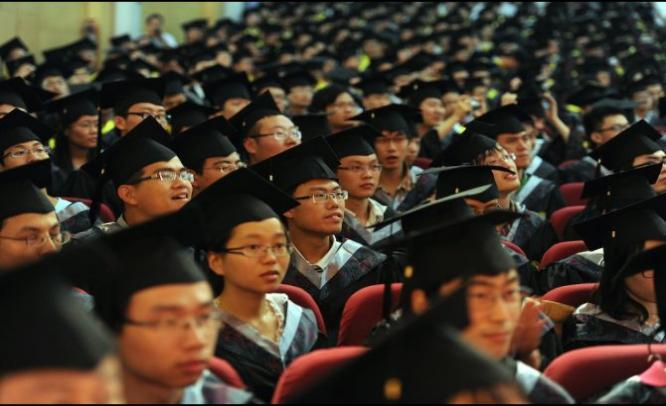Asia’s extraordinary rise on the global stage has been driven largely by its emergence as the world’s low cost, high output factory.
Over the past three decades Asia’s extraordinary rise on the global stage has been driven largely by its emergence as the world’s low cost, high output factory. But as countries strive to become more diversified in face of strains on resources and a changing workforce, building a knowledge economy is increasingly seen as the most sustainable way of driving growth while providing citizens with higher incomes and more fulfilling work.
It is also the key to Asia realizing its full potential this century, and avoiding the middle income trap that has befallen other developing regions.
Building a knowledge economy takes quality and accessible higher education, sound information infrastructure, better research and development, innovation, the right economic institutions and autonomy to collaborate and share information. Major OECD countries, where more than 50 percent of GDP is knowledge-related, exemplify these.
Member states of the Association of Southeast Asian Nations have posted impressive levels of growth above the global average in recent years. But a cursory glance at their rankings in the 2012-13 Global Competitiveness Report indicates that all but Singapore are struggling to make the transition to knowledge-driven economies.
Except for Singapore, none are innovation driven. Cambodia and Vietnam are still factor-driven. Indonesia and Thailand are efficiency-driven, while Brunei and the Philippines are in between the two stages. Malaysia has gained ground and is transitioning to become innovation-driven.
For Asean countries, much work needs to be done in education and skills development, technological readiness and innovation. Gaps in the quality of education, compounded by low gross tertiary enrollment rates of less that 50 percent, remain a major stumbling block.
Besides Singapore, none ranks among the top 50 globally in technological readiness. Except for Singapore, Malaysia and Indonesia, innovation is likewise weak for the rest of Asean.
Singapore’s success, despite its small size and limited natural endowments, has been nothing less than remarkable, with the island state now the second-most competitive economy in the world.
A quick look at the Knowledge Economy Index puts Singapore in the mid-range for OECD countries, but the Global Competitiveness Report shows it is ahead of OECD countries in several areas, including economic incentives and institutions.
It has a highly efficient public sector which works with the private sector to promote knowledge development. It performs better than most OECD members in its ability to adopt and absorb latest technologies.
The only small chinks in its armor are tertiary education enrollment and capacity to innovate. As other neighboring economies become more knowledge-driven, competition for a relatively tight pool of skilled workers will increase, posing a potential challenge to innovative thinking. The ability to access this high quality education is a way to address this future constraint.
Building knowledge economies will complement the Asean Economic Community, where goods, investments and skilled labor will be more mobile. But this means Asean countries will need to start redesigning their development programs and regional cooperation activities around the elements of a knowledge economy.
Countries will need to invest in both hard and soft infrastructure to facilitate knowledge creation and diffusion, as well as build an active public sector that collaborates with the private sector to nurture knowledge and innovation. Development assistance will need to be geared at building knowledge infrastructure rather than just the “bricks and mortar” investments of the past.
Becoming a knowledge economy means that knowledge is internalized and disseminated within the economy. Transforming to a knowledge economy cannot happen merely through the production of knowledge-intensive goods and services — the People’s Republic of China and India are clear proof of that.
An educated and skilled work force is critical for knowledge economies, and a challenge in a region where the average length of education is barely eight years and informal employment is high. Investing in world class institutions, strengthening university-industry links, and promoting cross-border institutional partnerships can create greater opportunities. Building talent widely will also help foster greater inclusiveness.
Asean countries exhibit the potential to achieve more growth. But for them to sustain this expansion and, at the same time, make it beneficial to all, Asean countries have to recognize these critical elements of a knowledge economy, and work together in investing their growth dividends toward becoming knowledge economies.
Source: “This article was first published by The Asian Development Bank (www.adb.org)”

